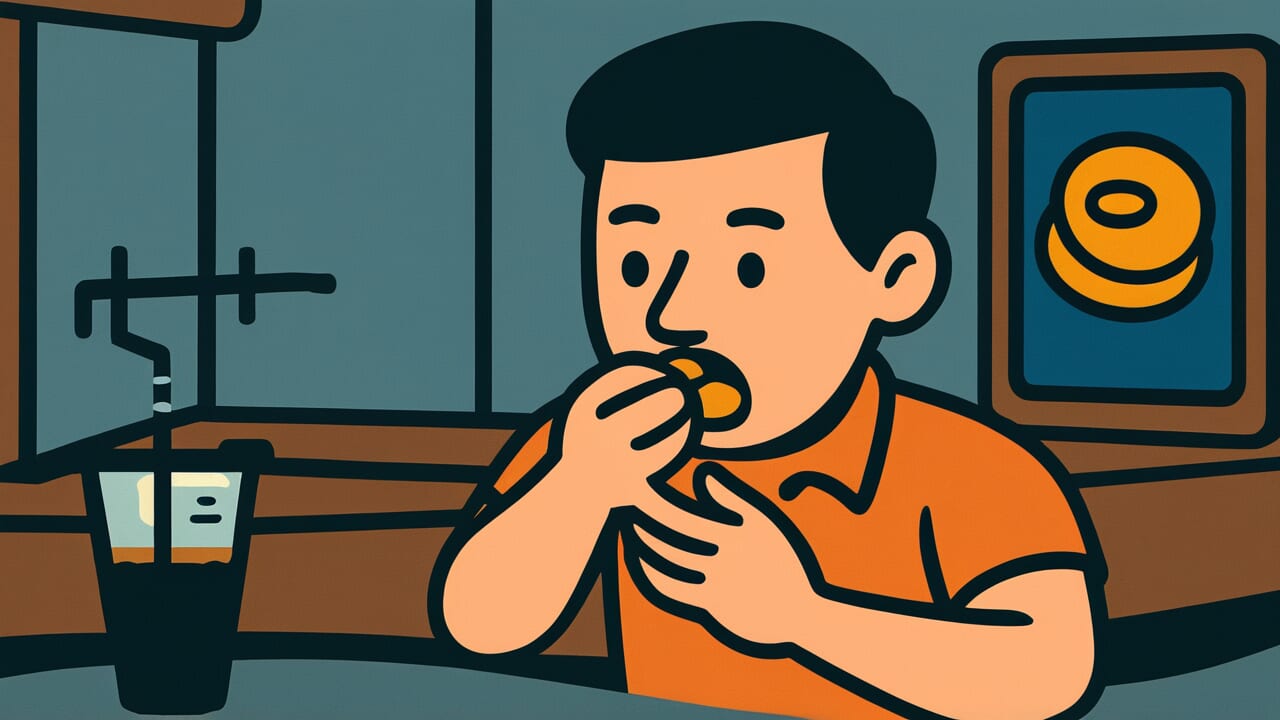How to Read “Eat but not know its taste”
くらえどもそのあじわいをしらず
Meaning of “Eat but not know its taste”
This proverb describes someone who only understands things superficially without grasping their true value or essence.
It uses the image of eating food – you can put it in your mouth and swallow it, but you don’t really sense the depth of flavor, the quality of ingredients, or the care the cook put into it.
Today, we use this saying in many situations. Someone reads a book but the content doesn’t sink in. A student attends class but understands only shallowly. A person gains experience but doesn’t grow from it.
It points out people who touch things formally but fail to grasp their essence or value.
The proverb shows the difference between simply gaining knowledge and truly understanding it. It’s used when questioning someone’s attitude toward learning.
You might have experienced this yourself. When you do something but your mind is elsewhere, you can’t achieve real learning or growth.
Origin and Etymology
The exact source of this proverb has several theories. Most likely, it comes from Chinese classical thought, especially Zen Buddhist teachings.
The contrast between “eating” and “knowing the taste” suggests the deep meaning of “knowing” in Buddhism.
In Buddhism, experiencing something through your senses and truly understanding its essence are considered completely different things.
Anyone can put food in their mouth and swallow it. But to really understand its taste, you need to engage with it wholeheartedly.
In Zen practice, meals are part of training. Monks are taught to value each bite carefully.
This expression likely emerged from such philosophical background. After reaching Japan, it spread to the worlds of learning and art.
It became established as a saying that explains the difference between superficial knowledge and true understanding.
The structure of the phrase itself brilliantly expresses the gap between action and comprehension. That’s probably why it has remained in people’s hearts for so long.
Usage Examples
- He reads famous books every day, but it’s “eat but not know its taste” – he can’t talk about the content
- She’s devouring dishes one after another at a fancy restaurant, but it’s “eat but not know its taste” – she just keeps looking at her phone
Universal Wisdom
This proverb reveals a fundamental human trait. We easily confuse “experiencing something” with “understanding something.”
People can consume what’s in front of them, but truly receiving its value requires a deeper level of mental engagement.
Why do people fall into this state? It’s not just a modern problem. Humans have always had a desire for “quantity.”
We want to experience more, know more, and obtain more. This urge prevents us from engaging carefully with each individual thing.
Our ancestors understood this human nature. That’s why they used eating – something everyone does daily – to teach the importance of grasping essence.
Putting food in your mouth is easy. But to truly know its taste, you must open your heart, sharpen your senses, and engage sincerely with what’s before you.
This proverb has been passed down through generations because humans have always faced this challenge.
In every era, there’s danger in being satisfied with superficial experiences. The difficulty and importance of gaining true understanding never changes.
When AI Hears This
The human brain has extremely limited capacity for conscious attention to multiple things simultaneously.
Neuroscience research shows that only about 5 percent of the brain’s attention resources can be used for conscious processing. The rest goes to unconscious automatic processing.
Eating is exactly where this constraint becomes obvious.
The series of actions – bringing food to your mouth, chewing, swallowing – are highly automated in the brain. The cerebellum and basal ganglia handle these unconscious programs.
But to consciously perceive taste requires active involvement from the prefrontal cortex, the brain’s command center.
When people think about something else, the brain activates the default mode network, a circuit for introspection. This means recalling past memories or thinking about future plans.
Interestingly, this default mode and conscious taste processing compete for resources in the brain.
Modern people eating while looking at their phones don’t remember the taste. This isn’t a willpower issue.
It’s because the brain structurally lacks sufficient resources to process visual information and consciously perceive taste simultaneously.
This proverb empirically identified a neuroscientific fact: human attention has a surprisingly narrow bandwidth.
Lessons for Today
This proverb teaches you to value depth over speed. In our pursuit of efficiency, aren’t we reaching for new things one after another?
Haven’t we lost the time to engage carefully with each individual thing?
What matters is the attitude of putting your heart into what’s in front of you.
If you read a book, don’t focus on how fast you turn pages. Savor the meaning of the words.
If you meet someone, don’t worry about your next appointment. Treasure the time with that person.
If you work, don’t just get through tasks. Try to learn something from them.
What enriches your life isn’t the number of experiences, but their quality.
Starting today, why not truly engage with just one thing? Your morning coffee, the scenery on your commute, or conversation with family – anything works.
When you direct your consciousness there, you’ll notice richness you never saw before. True understanding begins when you stop and pay attention.



Comments